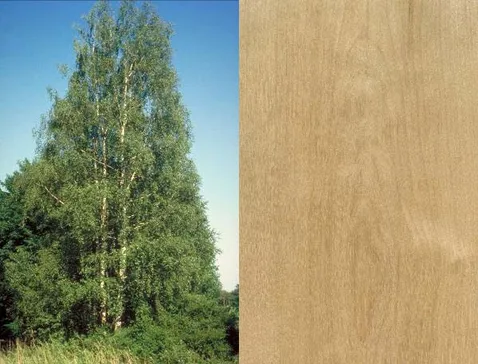
The Holzforschung München of the Technical University of Munich offers a bachelor / master thesis on the following topic.
Description
In the wake of climate change, different native hardwood species are increasingly coming into focus. One such species, which is widely used in northern European countries, is birch. Until now, the mechanical properties of birch from Germany have hardly been investigated. In addition, the potential of different grading methods, which serve as prerequisites for the successful use of wood in construction, is unknown. When grading wood according to load-bearing capacity, the relationship between grading parameters on one side and mechanical properties on the other side is used to classify the wood into classes with defined mechanical properties.
The aim of the present study is to determine the potential of the birch species for use in construction. In particular, the relationship between the visual or machine grading parameters (dynamic modulus of elasticity, knottiness, fiber deviation) and the mechanical properties is to be analyzed. The work is limited exclusively to the evaluation of data already collected.
Translated with www.DeepL.com/Translator (free version)
In detail, the following points are to be worked on (objective)
- Elaboration of the current state of knowledge
- Evaluation of the mechanical tests
- Application of the regression analysis for the investigation of the correlations
- Determination of the mechanical properties of birch wood
- Discussion and presentation of the results
The results of the work are to be presented in an approx. 30-minute talk at the Wood Science Seminar of Holzforschung München and displayed on a poster.
Supervision and further information

Wood Technology department of the Technical University of Munich is providing the named subject in the form of a master thesis.
Description
Wood is a bio-material with anisotropic and non-homogenous material properties. Damage in wood can happen due to several reasons, including the drying effects, and accumulation of the stresses on the location of joints. Due to orthotropy of this material, different damage parameters should be considered for wood to cover failure of this material both under tension as well as under compression. Damage of wood is ductile under compression and brittle or quasi-brittle under tension and shear. The purpose of this thesis is to enhance failure modes for damage initiation. Different criteria need to be taken into consideration, implemented as user-defined material models in the computational software Abaqus to be investigated on specific benchmark problems.
The following points should be satisfied during the thesis:
- Literature review on different failure criteria for damage initiation in the composite materials and wood
- Implementation and further developement of user-defined material models (UMATs) in Abaqus
- Investigation of UMATs on benchmark problems
-
Damage propagation
Language: English, Thesis available from September 2021
Supervision and further information: Franziska Seeber, Ani Khaloian, Prof. van de Kuilen
